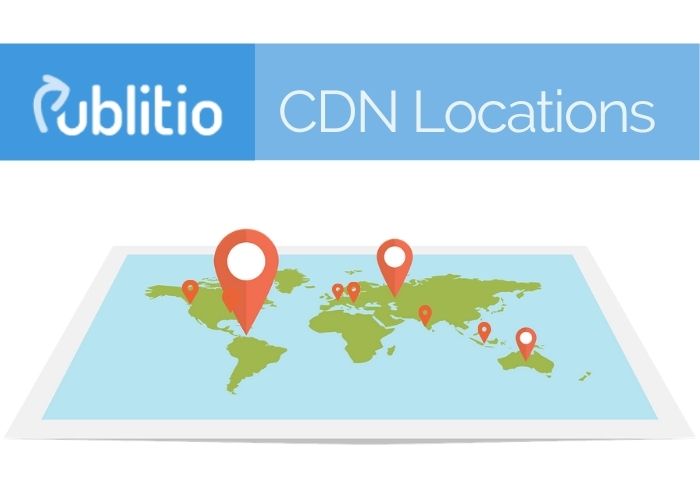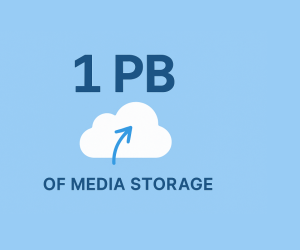Every website owner would want their visitors to have the best possible experience on their website, have a nice impression about it, and recommend it to their friends. They will not do that for sure if it takes forever to load a single page. Once it finally loads the webpage, the pictures are still not loaded. Let us tell you, the problem is not with their internet connection. The problem is that your website is overflowed and has many visitors at the same time, and your origin server is too far away from them. How can you solve that? CDN network is the solution.
What is CDN?
CDN stands for Content Delivery Network and it represents a distributed network of web servers across the world. Each server stores a cached copy of data accessed by the visitors of the website. The time needed for data to go from the hosting platform to the end-user is called latency, also known as load time. CDN works by delivering content to the end-user according to their location, with the main goal to reduce latency. The closer the user is to the host, the less time it takes for data to travel because the physical location is shorter. That is why the CDN nodes are spread all over the world, so all visitors have as little load time as possible. Once the user requests a certain URL on the website, the closest CDN server will respond by sending data that the user requests to access.
How does CDN work?

Once the user enters the URL in order to open a certain web page, the request for data is immediately being sent to the nearest content delivery network. If the CDN already has the requested data cached in that center, it is directly sent back to the website visitor, the latency is short and it takes no time. On the other hand, if the CDN does not have the requested data cached, then the visitor’s request goes to the main hosting platform which hosts the content of the website. In this case, it might take a little while for the page to load. The nearest CDN node will then cache this data and have it ready for all future requests for that particular node.
All mentioned above happens if the CDN is already set up. If the website you request to visit does not have a setup CDN, then all requests, from visitors around the world, go straight to the main hosting platform. It takes a lot of time to load the web page, images, videos, to post a comment, etc. The further you are, the more time it will take for the website to send back the data you are requesting to see. Facebook, Youtube, Instagram, Google, Netflix, and many others all use CDNs in order to give their users the best experience, and so should you.
If you want to know more about CDN, its characteristics, security, and DDoS attacks, visit our Image & Video CDN feature page.
Types of CDN
Peer-to-Peer CDN
A peer-to-peer content delivery network, also known as P2P, is usually used for high-quality live video streams, but it is also used for exchanging files between the files on different devices around the world. The perfect example of P2P CDN is BitTorrent. The network is searching for the wanted file among all users and sending back the data which is ready to be downloaded.
The Peering
Peering is a CDN method that allows two networks to connect and enable data traffic among them, without including the origin server in it. This way, the data traffic is free and the website does not have to pay for the bandwidth used for all their users. The CDN nodes are situated all over the world and they are the ones that send data directly to the users who enter a certain URL into their search bar or click on a link.
Why is CDN Needed in E-Commerce?

Every website owner wants their visitors to have the best experience on the website, have positive thoughts about it, gain trust, and become a paying customer. If the website does not work properly and fast, there is a huge chance that the visitors will not even get the chance to see its true qualities and offers. There are researches that proved that a big percentage of users click off the website if it does not load within 5 seconds maximum. CDN has a role in making the user's experience the best possible and here is why:
Location
 The location is one of the most important factors when it comes to CDN. If the website only uses one main hosting service, the visitors who are far away from the geographic location of the host will have a very bad time while waiting for the data to travel all over the world to get to them. The reduction of physical distance actually helps reduce the latency. The more CDN nodes there are in the world, the better experience users will have because they will be closer to the node which sends the data. The load time will last very shortly if the user’s internet connection is strong.
The location is one of the most important factors when it comes to CDN. If the website only uses one main hosting service, the visitors who are far away from the geographic location of the host will have a very bad time while waiting for the data to travel all over the world to get to them. The reduction of physical distance actually helps reduce the latency. The more CDN nodes there are in the world, the better experience users will have because they will be closer to the node which sends the data. The load time will last very shortly if the user’s internet connection is strong.
Number of Users
As your website grows, the number of visitors increases, and not only will they have a bad time using your website because they are geographically away from your hosting center, but also because a huge number of parties will be trying to access the website at the same time. One hosting center has its limits and cannot respond to so many visitors all at once. CDN is the one and only solution for this problem. Once you set up the CDN nodes in several different locations in the world, the data flow will be much smoother and easier. Each node will have its own visitors who are situated in its area and there will be no need to overflow the main hosting service. Once the user enters the URL, the closest node will immediately respond to the request and the user will access the URL they asked for.
Bandwidth
Believe it or not, CDN can actually reduce your bandwidth costs significantly. The data sits between the users and the CDN nodes and that way it reduces the costs of transfer, by cutting down the communication between a hosting and all visitors around the world. If there are cached versions of most of the website’s content, then the bandwidth costs will decrease, since the hosting platforms charge only for the data transferred to or from the origin server. By using CDN, you will save a lot of money, while still giving your visitors even better website performance.
Is CDN Secure?
CDN is mostly very reliable and secure for most public files. When uploading an image as a part of a blog, you would probably want everyone to be able to see it. In this case, the CDN is usually set up in a way that there is a very low risk of having some troubles with the security of your content. On the other hand, private files are also very secure in CDN servers, but you need to be extremely careful when sharing them on your website. If you only want certain people to have access to those files, you need to be sure you protect your files before posting them.
How to set up CDN in WordPress?
It is actually very easy. The first thing you need to do is choose the CDN provider. Next, download their WP plugin and apply them to your website. The plugins automatically link all your media files to the CDN and there is no manual work. The CDN nodes across the world are then available for your visitors and they will make sure your data gets delivered and loaded in no time.
Publitio CDN
Publitio is a content delivery network and as soon as you download the Publitio WP Plugin, it will immediately start acting as a CDN. Publitio has 6 data centers around the world: New York and San Francisco in the USA, London and Amsterdam in Europe, and Bangalore and Singapore in Asia. If you select Publitio as your CDN, your visitors will be served your images, videos, or other assets from our nearest CDN note, according to their location. The loading speed will amaze your visitors: approximately near 60ms/request! Make sure you check out our Pricing Plans and choose which one is the best for you, and you can always customize the amount of monthly bandwidth!




